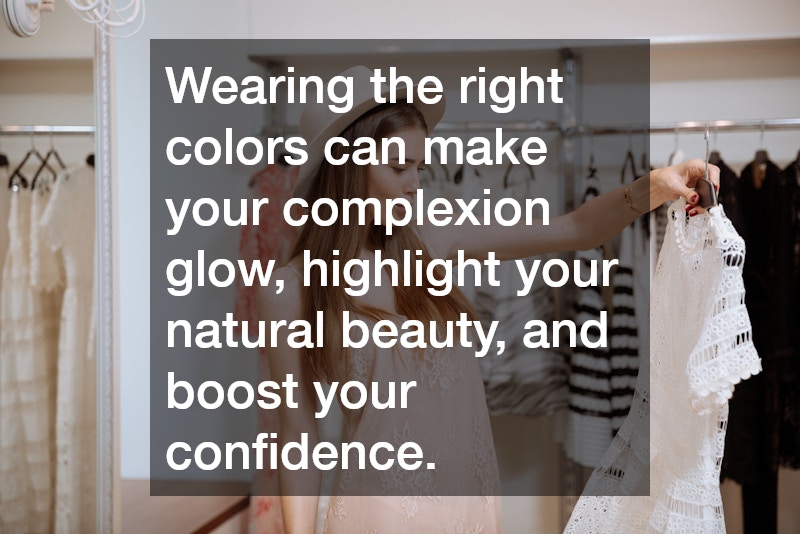Understanding your colour seasons can transform the way you dress, apply makeup, and shop for your wardrobe. Based on the principles of seasonal color analysis, each individual falls into one of 12 distinct categories, known as colour seasons, that align with their natural features. These seasons—Spring, Summer, Autumn, and Winter—are further divided into subcategories, such as Light Summer or Deep Winter, to reflect subtle variations in tone and contrast.
The key to uncovering your colour season is to identify the shades that harmonize with your skin tone, hair color, and eye color. Wearing the right colors can make your complexion glow, highlight your natural beauty, and boost your confidence. Here are essential tips to help you find your perfect colour season and enhance your style with a palette that complements your unique features.
Understand the Basics of Colour Seasons
The concept of colour seasons revolves around the undertones, contrast levels, and intensity of your natural coloring. Each season is defined by specific characteristics:
- Spring: Warm, light, and clear colors. Think golden undertones, peachy hues, and fresh pastels.
- Summer: Cool, soft, and light tones. These include muted blues, pinks, and lilacs with a cooler base.
- Autumn: Warm, deep, and rich colors. Earthy shades like burnt orange, olive green, and deep gold dominate this palette.
- Winter: Cool, deep, and bold tones. Crisp whites, icy blues, and jewel tones characterize this season.
Knowing these foundations helps you start identifying your personal color traits.
Determine Your Skin Undertone
The first step to discovering your colour season is understanding your skin undertone. There are three main undertones:
- Cool Undertone: Skin has hints of pink, red, or blue. Silver jewelry tends to look better than gold.
- Warm Undertone: Skin leans toward yellow, peach, or golden hues. Gold jewelry complements your skin more than silver.
- Neutral Undertone: A mix of cool and warm tones, making you versatile with a variety of colors.
To identify your undertone, examine the veins on your wrist. If they appear blue or purple, you likely have a cool undertone. Greenish veins suggest a warm undertone, while a mix of blue and green may indicate a neutral undertone.
Consider Your Hair Color
Your natural hair color plays a significant role in determining your colour season. For accurate analysis, focus on your natural shade, as artificial coloring may alter your perception.
- Light, warm hair colors like golden blonde or strawberry blonde suggest a Spring or Autumn palette.
- Cool shades like ash blonde, jet black, or ashy brown align with Summer or Winter palettes.
- Medium shades, such as chestnut brown or dark blonde, can fit into transitional palettes like Soft Summer or Soft Autumn.
Evaluate Your Eye Color
Eye color adds another layer to identifying your colour season. The brightness, depth, and undertone of your eyes can guide you toward the correct palette:
- Bright green, blue, or amber eyes are common in Spring palettes.
- Muted gray-blue or hazel eyes often align with Summer palettes.
- Deep brown, olive green, or hazel with golden flecks suggest Autumn palettes.
- Intense, icy blue, or black-brown eyes are typical in Winter palettes.
The combination of your eye color with your skin and hair will help you narrow down your season.
Test Colors Directly
One of the most effective ways to find your colour season is to test various shades against your face in natural light. Hold up different fabrics or swatches to see how they interact with your skin tone.
- Warm Colors: Test golds, oranges, and yellows. If these make your skin look radiant, you may belong to a warm season like Spring or Autumn.
- Cool Colors: Try icy blues, purples, and pinks. If these enhance your features, you might fall into a cool season like Summer or Winter.
- Muted vs. Vibrant: If muted tones suit you better than bright, clear hues, you may lean toward a softer season like Soft Summer or Soft Autumn. Conversely, vibrant shades suggest a brighter season like True Winter or True Spring.
Pay attention to how the colors affect your complexion, eye brightness, and overall appearance.
Observe Contrast Levels
Contrast is a defining characteristic of many colour seasons. It refers to the difference in lightness and darkness between your hair, skin, and eyes.
- High Contrast: If you have light skin with dark hair or a dramatic difference between your features, you may belong to Winter or Spring palettes.
- Low Contrast: Softer transitions between your features often point to Summer or Autumn palettes.
Matching your contrast level to your color palette ensures that the colors you wear harmonize naturally.
Consult a Color Analyst
If you’re struggling to identify your colour season, consider consulting a professional color analyst. These experts use draping techniques and detailed assessments to pinpoint your season with precision.
A color analyst can also provide insights into how to incorporate your palette into your wardrobe and makeup routine. This investment can save you time and money by ensuring your purchases align with your most flattering colors.
Experiment and Adjust
Seasonal color analysis is not a rigid system; it’s a guide to help you find what works best for you. Feel free to experiment with different colors within your suspected season and adjust based on your preferences.
For example, if you’re a Dark Autumn but love brighter hues, incorporate them as accents rather than dominant pieces. The goal is to feel confident and authentic in your choices.
Finding your colour seasons is a rewarding journey that helps you discover shades that enhance your natural beauty and boost your confidence. By understanding your undertones, evaluating your features, and experimenting with different colors, you can identify the palette that harmonizes with your unique characteristics.
Once you’ve found your season, building a wardrobe and makeup routine becomes more effortless and enjoyable. Embrace the colors that make you shine, and let your personal palette guide your style with elegance and ease.
.







